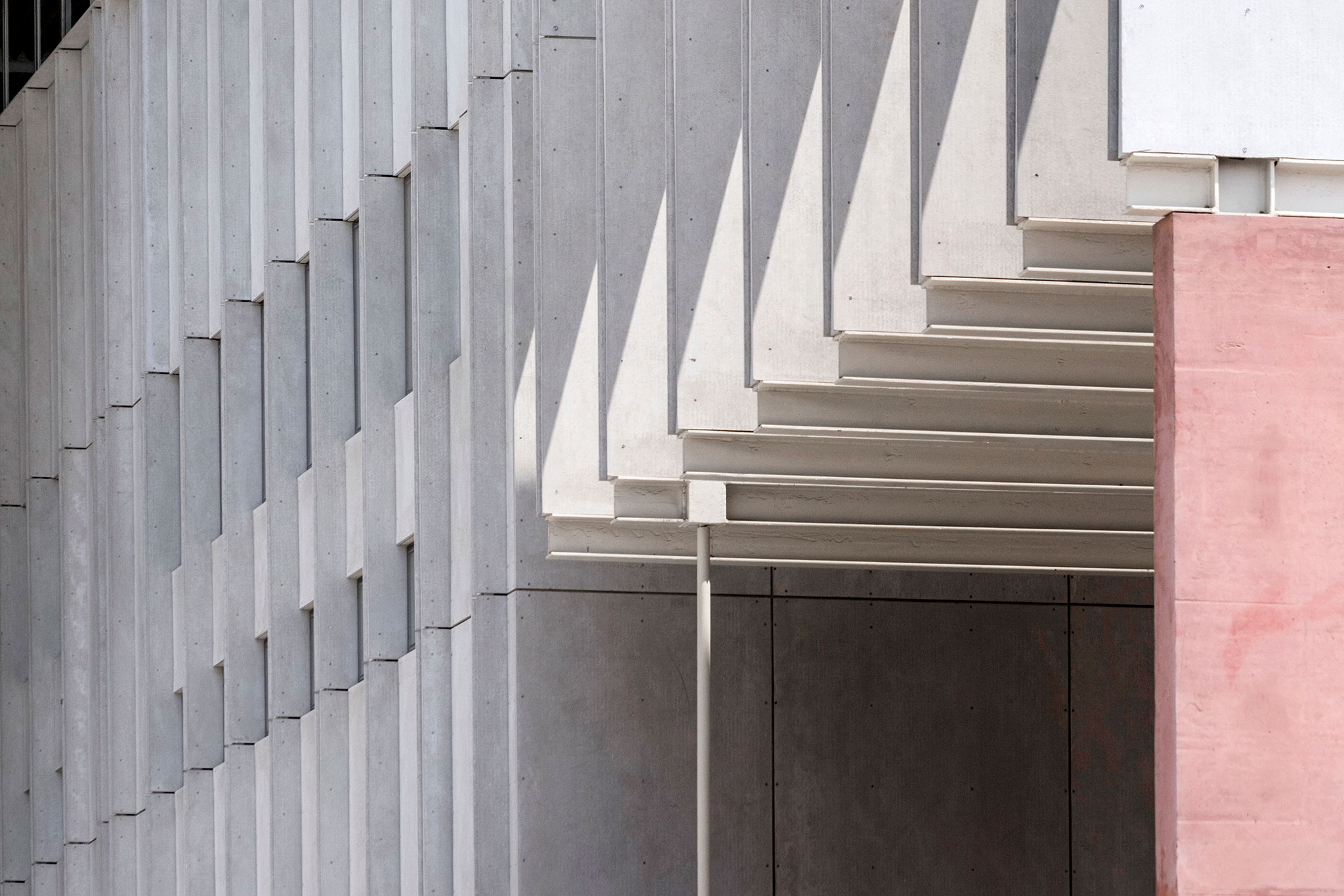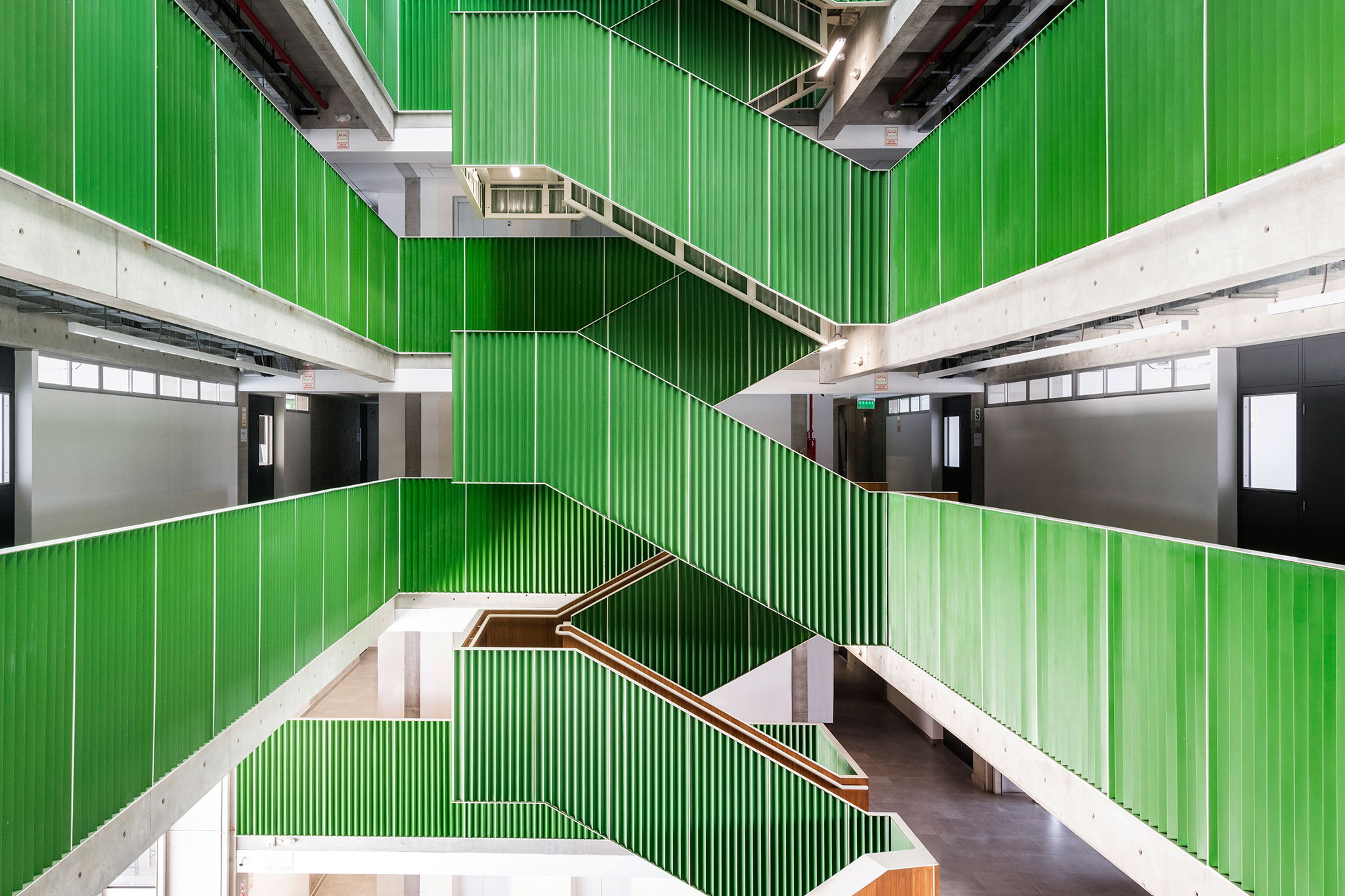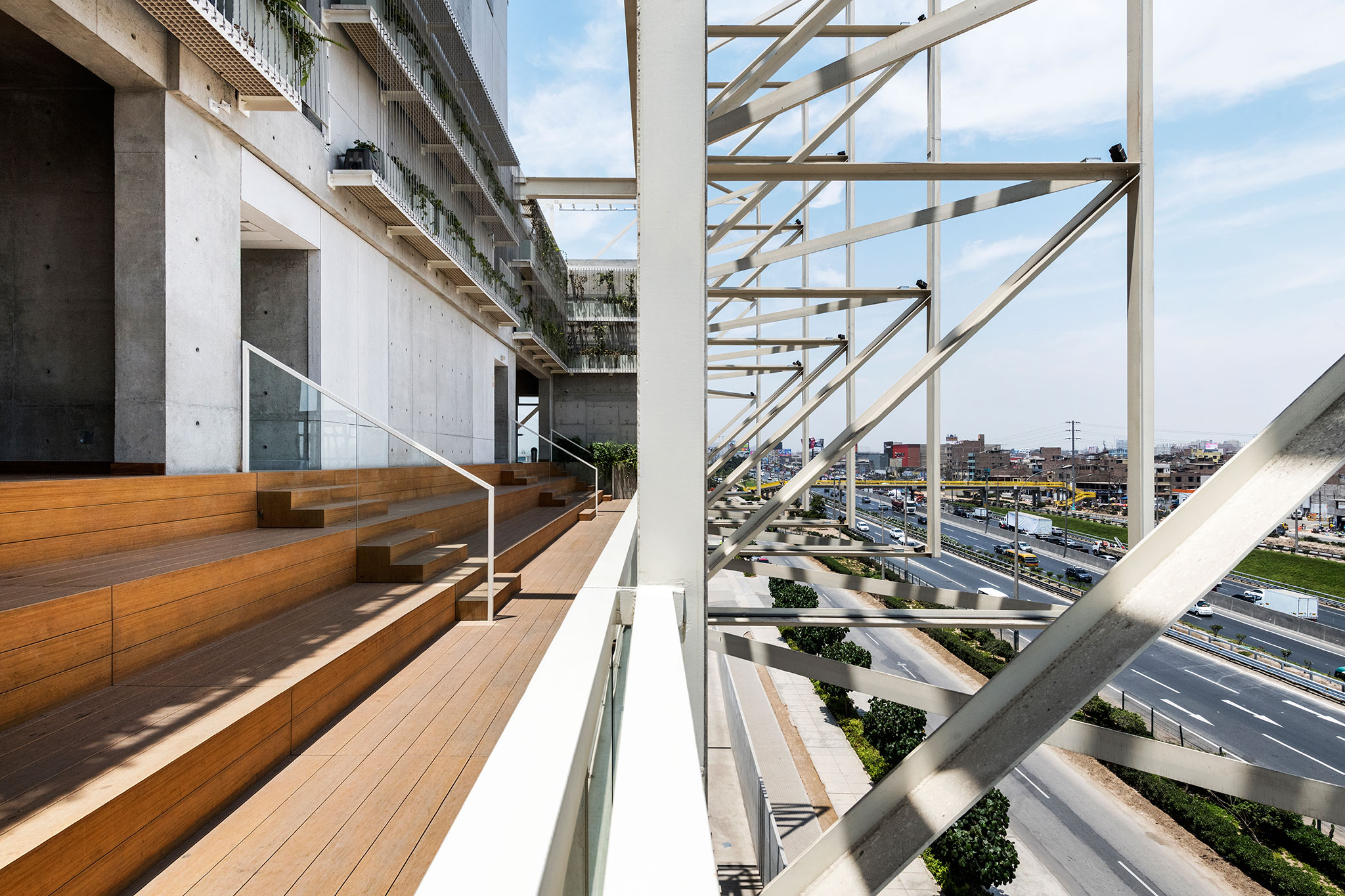Plan A raises the design by multiplying shared meeting spaces, spaces that facilitate interaction between students, promoting a more open way of learning, an articulation of spaces in which it is important to highlight its openness to the city with important and generous assignments of spaces to the city.
Thanks to these spaces, the access, behind the shade that protects the entrance, is hybridized with a square where there is a cafeteria, the library and an auditorium that can be opened to the outside. The rest of the buildings and programs that make up the campus are organized around a boulevard, from which a series of stairs and squares arise that vertically articulate the rest of the program.
Volumetrically, the building consists of 2 elements. The first is a two-story plinth where scientific career laboratories are located, with a roof that is landscaped, and on it, there are different classrooms with views of the Pan-American Highway. The second is the so-called horizontal tower with three floors and a roof terrace, which is expected to grow with three additional floors, a situation of waiting and transit whose formal forcefulness is qualified by a self-supporting metal skin that also serves to illuminate the façade. and give it maintenance.

University Campus of the Southern Scientific University by Plan A. Photograph by Renzo Rebagliati.

University Campus of the Southern Scientific University by Plan A. Photograph by Renzo Rebagliati.
Description of project by Plan A
This university headquarters is located in the ‘Cono norte’ of the megalopolis that Lima has become. Around it there are from populous neighborhoods to more humble areas, passing through the ‘cerros’, product of recent invasions and with abundant precarious housing. A gigantic expanse of brick as far as the eye can see that fills the valley and overflows into the hills that surround it. In this context, next to the Pan-American highway, the backbone of the country, is located this project that, in the first instance, wants to make city and become a catalyst for change.
The project for the "Universidad Cientifica del Sur" combines the principles of a humanistic and innovative education with non-negotiable commitments to the city and the environment. Understanding learning as a shared process —which goes beyond the hierarchical space of the classroom—, the proposal considers the creation of common spaces in which learning occurs at other levels to be key. This shared space is built from the very entrance to the campus, with a cession of 17% of the lot in public areas that will improve the spatial quality of the neighborhood by providing shade, benches, trees and meeting spaces. A courageous decision on the part of the institution that shows its commitment to contribute to the improvement of the city.

University Campus of the Southern Scientific University by Plan A. Photograph by Renzo Rebagliati.
Approaching it from a spatial perspective, behind the shade that protects us at the entrance, a small square brings together a cafeteria, a library and an auditorium that can also be opened to the outside. In the longitudinal sense, a boulevard articulates the campus. Through a system of stairs, bleachers and hanging squares, it is verticalized and offers us several connection options between the ground plane and the green roof that finishes off the plinth. The space then continues inside the tower to reach the roof through a skylight-greenhouse. This generosity of intermediate spaces responds to the intention of building a sustainable, healthy, comfortable, educational and integrated campus.
From an object point of view, the building consists of 2 pieces: firstly, a two-story plinth in which the laboratories of scientific careers are located and which is related to the scale of the neighborhood. This is topped with a landscaped roof and on it rests a large volume of classrooms that has a central void and opens on its front end on the Pan-American highway, becoming a benchmark. Currently this "horizontal tower" has three floors and a roof, although it is planned to grow three additional floors. The rotundity of the tower is qualified by a self-supporting metal skin that also serves to illuminate the façade and maintain it. With this strategy, it is intended to articulate a change of scale that, on the one hand, allows us to incorporate the large number of square meters necessary and that, on the other hand, is already present in the place because it is a border between the fabric of the neighborhood and the Pan-American highway.

















































